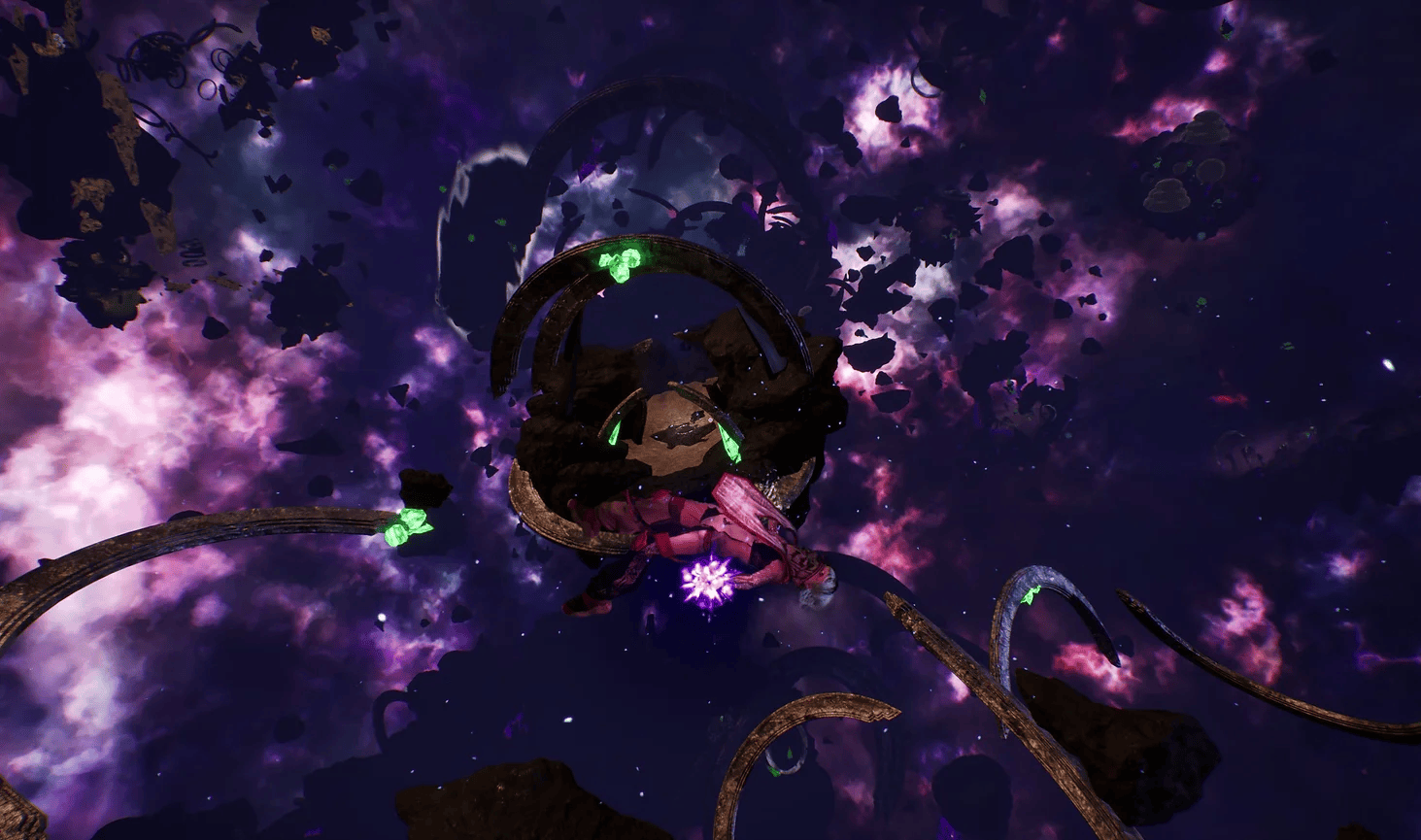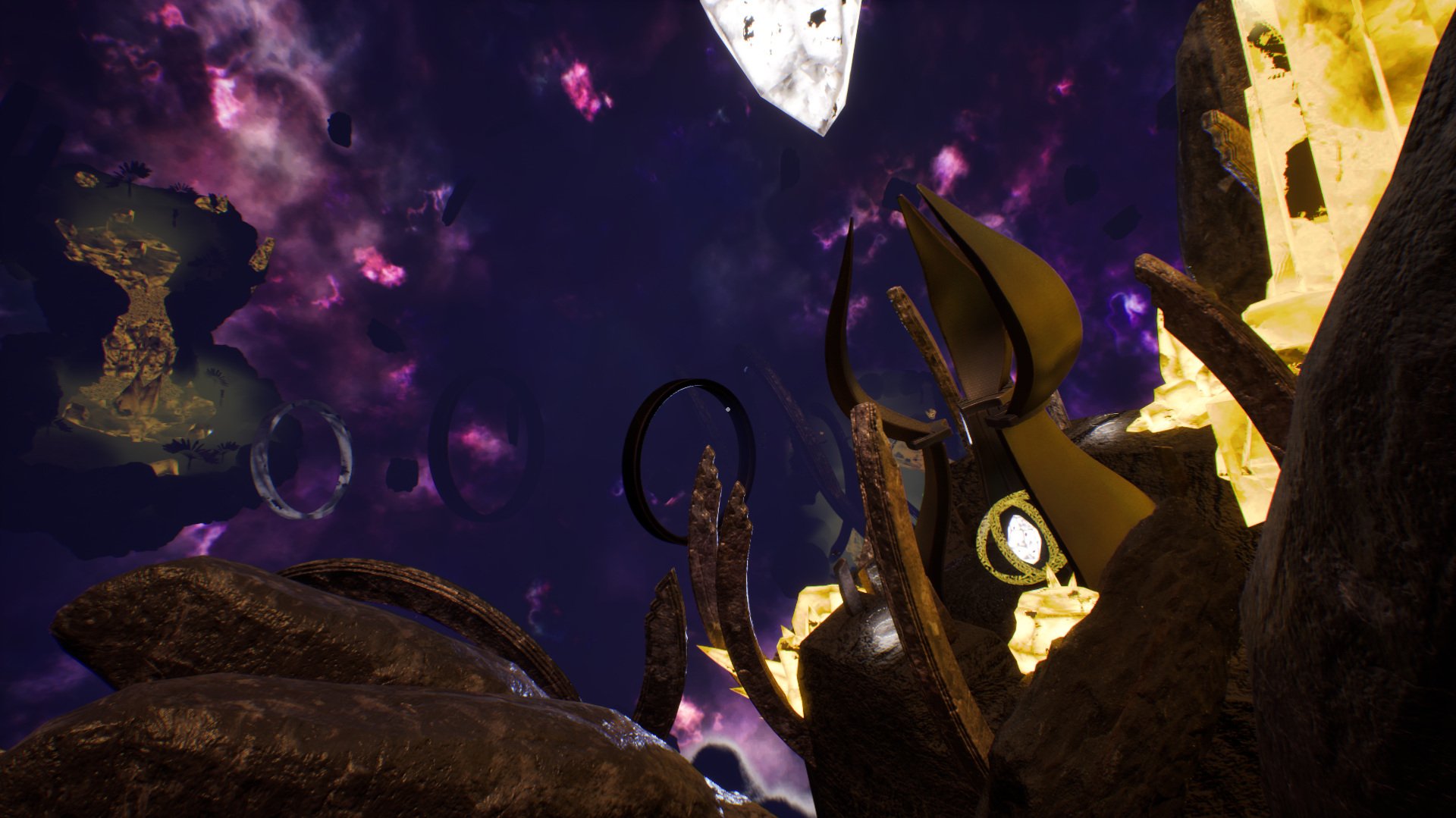Imvi: Echoes of Harmony
Producer | 18 weeks | 23-Person Team
An experiential exploration game set in the ruins of an ancient alien civilization. Use the repulsive and attractive forces of black and white singularities to traverse the world and uncover the mysteries of Imvi along the way.
As a producer my responsibilities included…
Maintaining the team Confluence page and authoring content for discipline teams
Managing builds to meet milestone and publishing standards
Crafting and implementing milestone-based risk mitigation plans
Facilitating show-and-tell meetings to present development progress, promote team alignment, and celebrate achievements
Contributing to the pre-release marketing efforts by participating in developer interviews
Coordinating and scheduling meetings with external music and voiceover talent










What I learned producing Imvi…
1. Communicating the Why:
Producing Imvi, I experienced firsthand how a game’s identity can shift dramatically during development. Early on, we had a strong concept, but as we iterated and refined the mechanics, we had to navigate multiple transitions to truly “find the fun.” These shifts were exciting but also introduced challenges—features that once seemed essential became obsolete, priorities changed, and the team had to constantly adapt.
One of the biggest lessons I learned in managing these transitions was that clarity isn’t just about keeping people informed—it’s about making sure they understand why changes are happening. As our game evolved, I realized that simply updating tasks or announcing shifts in direction wasn’t enough. The team needed to see the reasoning behind decisions and how their work fit into the bigger picture. When people understood why something was changing, they were more engaged, better equipped to adapt, and could even contribute ideas that strengthened the game. Communicating the why wasn’t just about transparency—it became a tool for motivation.
2. Defining Conditions of Satisfaction:
Throughout development, as our vision shifted, it became clear that ambiguity could easily derail progress. Without clear success criteria, work was misaligned, leading to wasted effort and frustration. Looking back, I realized that if we had done a better job defining conditions of satisfaction early on, it would have helped keep everyone on the same page about what the game was becoming. As we navigated major transitions, having clearer criteria could have acted as guideposts, ensuring that each iteration moved us closer to a shared vision. Instead of occasional uncertainty about what “done” or “successful” looked like, the team would have had a stronger collective understanding of what we were aiming for—allowing us to adapt more efficiently and with more confidence.
3. “Group-on-One” Meetings:
As a producer, it is important to me that the team is enjoying the work they are doing. Early in development, I would have one-on-one meetings with team members to check in on progress, challenges, concerns, or even just catch up. However, I noticed that one-on-one meetings sometimes felt intimidating or unnatural for team members.
One of the biggest lessons I learned in adapting to this feedback was that the format of a conversation can be just as important as the conversation itself. While one-on-one meetings seemed like the best way to check in individually, they didn’t always create the right environment for open discussion. By shifting to group-on-ones—meetings where I met with an entire discipline team rather than individuals—I found that team members were more willing to share their thoughts, build on each other’s ideas, and express concerns in a way that felt more natural. This experience reinforced the importance of adapting leadership approaches to fit the needs of the team, rather than expecting a single method to work for everyone.
